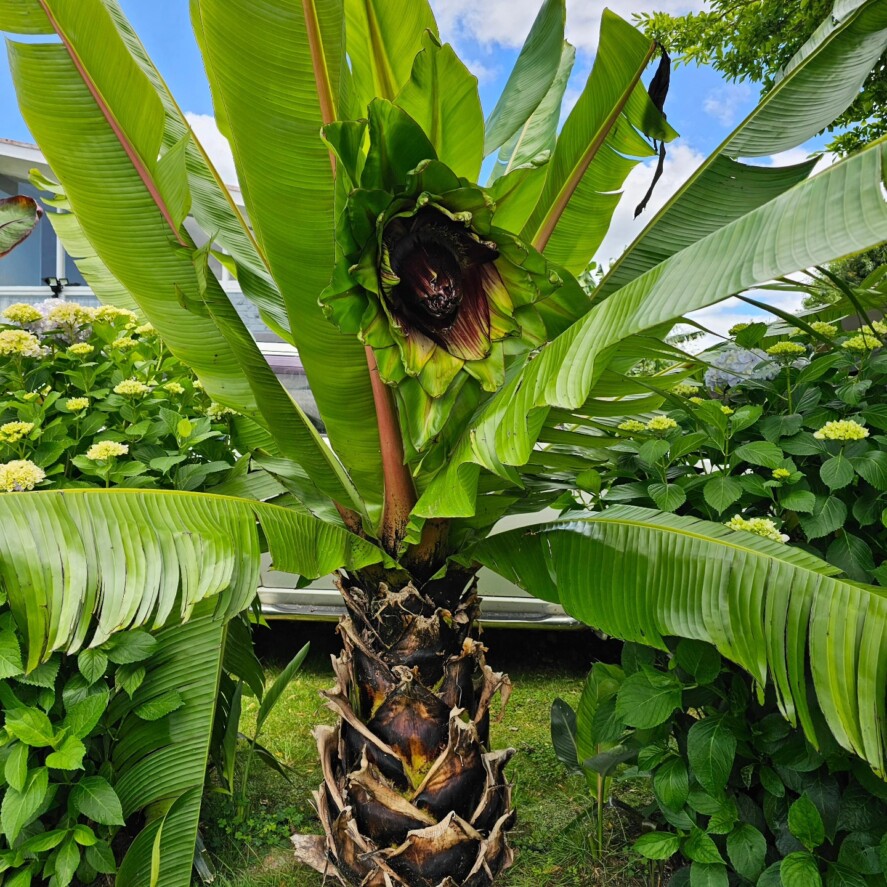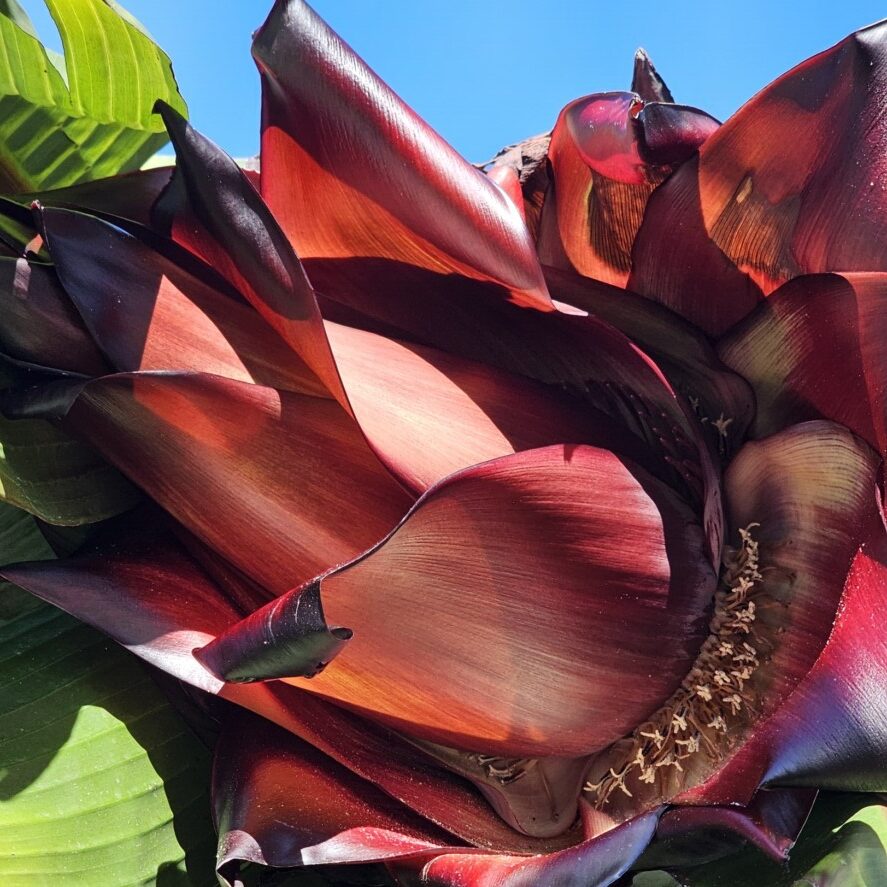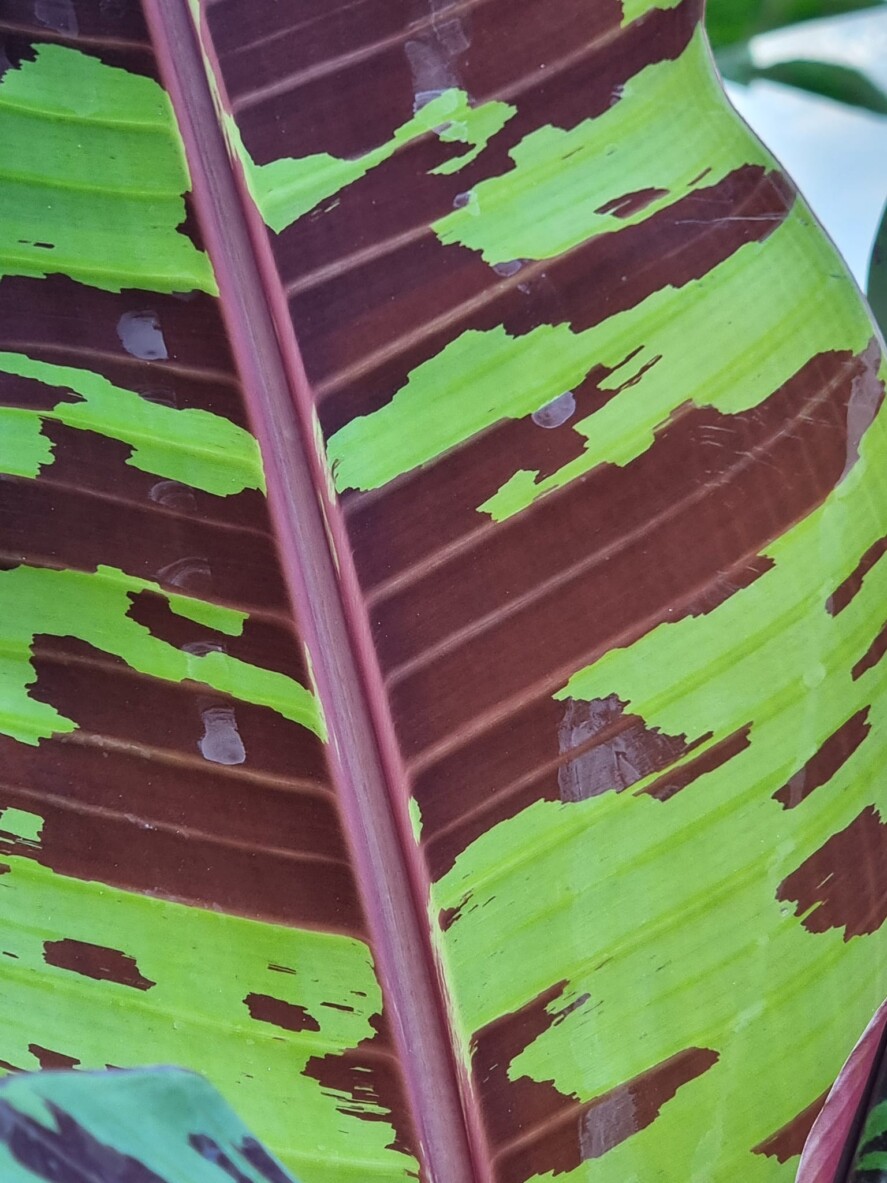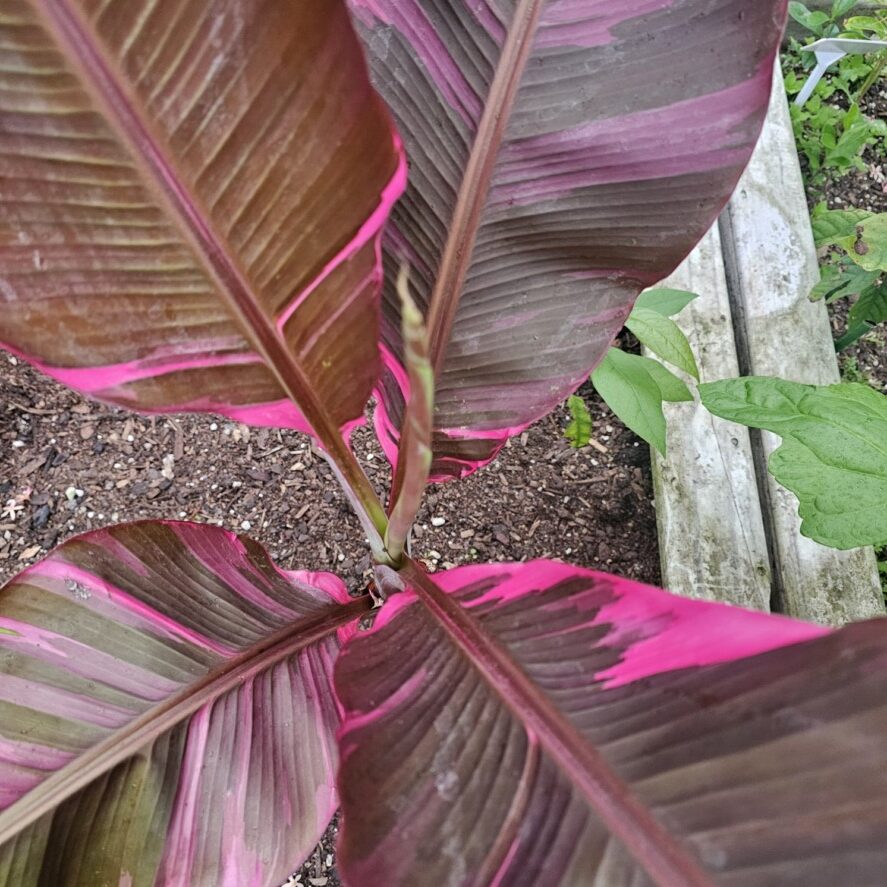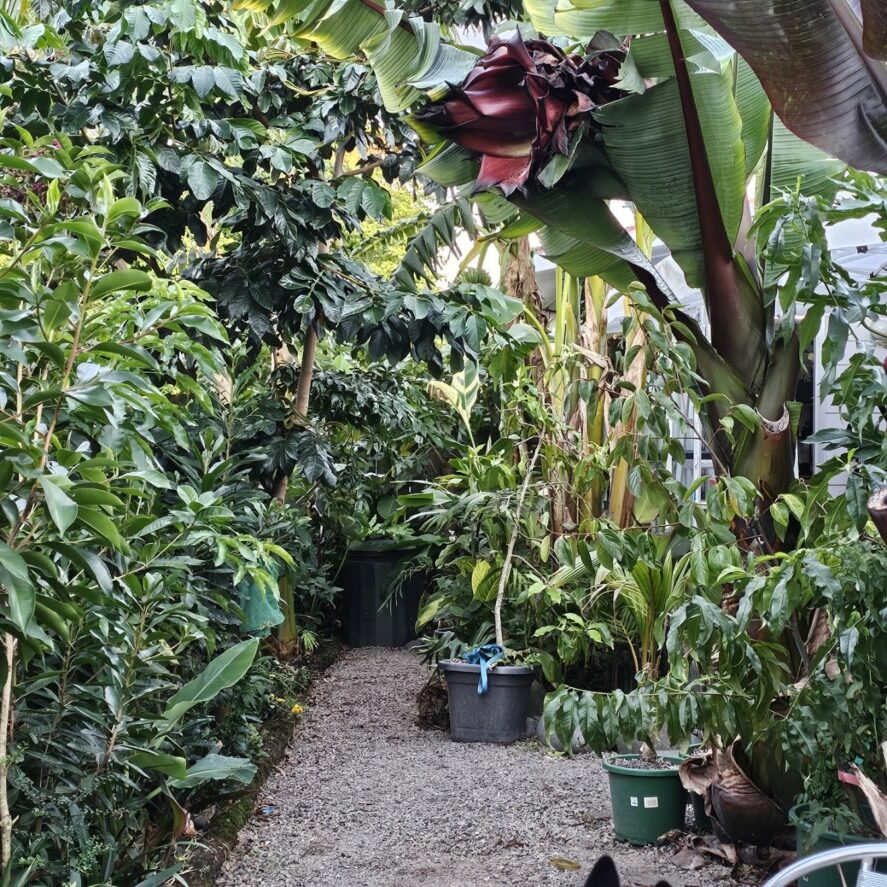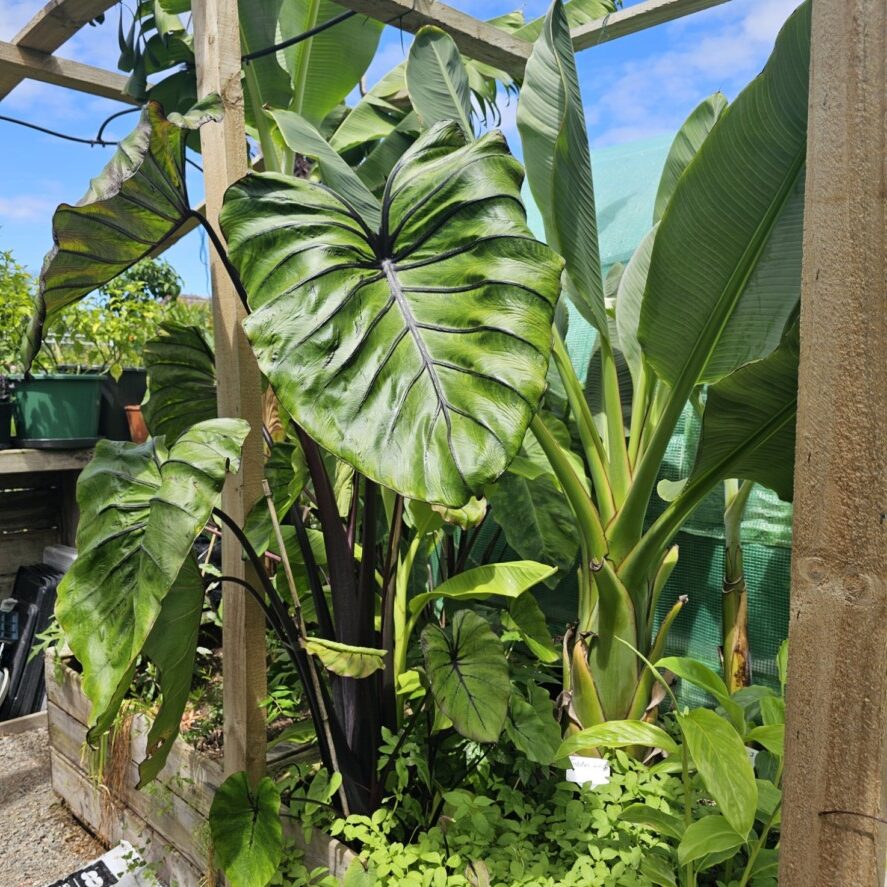-
Troppo Plant & Garden Articles
- Te Puke Region
- TROPPO’s Food Forest in Te Puke, BOP (www,foodforest.org.nz)
- Troppo’s Plant Collection
- TROPPO's Nursery Directory
- Food Forests of New Zealand (www.foodforests.nz)
- Nursery Map - Plant Suppliers of NZ Directory (www.nurserymap.nz)
- Kids Garden Corner
- New Zealand Garden Bird Survey
- New Zealand Garden Groups
- Delicious Recipes
Banana 'Misi Luki' – Sweet and Hardy Banana Variety for Home Gardens
It’s time to enhance your home garden with the delightful and resilient Banana ‘Misi Luki’ variety. Known for its exceptional sweetness and robust growth, this banana plant thrives in a variety of climates, making it an ideal choice for your backyard or patio. With its eye-catching appearance and easy care requirements, ‘Misi Luki’ not only produces delicious fruit but also adds a tropical flair to your garden. Dive into this post to learn about its care, benefits, and steps to successfully grow this delightful banana in your own space.
Botanical Description
While the ‘Misi Luki’ banana variety stands out for its robust nature, its unique botanical profile is equally impressive. This cultivar belongs to the Musa acuminata species, characterized by its tall stature, large leaves, and versatile growth habits. Thriving in tropical climates, it is known for producing stunning, decorative foliage alongside mouthwatering bananas, making it a favorite for home gardens.
Plant Characteristics
Botanical features of the ‘Misi Luki’ banana plant include a tall growth habit that can reach up to 3 meters. Its leaves are long and broad, averaging 2 meters in length, with a vibrant green color that adds beauty to your garden. This hardy plant can tolerate various soil types and conditions, making it an adaptable choice for different home garden settings.
Fruit Characteristics
About the ‘Misi Luki’ bananas, they are known for their sweet taste and creamy texture, making them a delightful addition to your fruit harvest. The fruits typically grow in large clusters, turning from green to a rich yellow when ripe. Each banana is medium-sized, averaging around 100-120 grams, and is filled with natural sugars, providing a delicious snack or ingredient for various dishes.
This banana variety not only offers an enjoyable fruiting experience but also has the added benefit of being resistant to common diseases that can affect other banana plants. The fruits are nutrient-rich, packed with potassium, fiber, and vitamins, which promote overall health. Enjoying ‘Misi Luki’ bananas not only satisfies your taste buds but also contributes to a balanced diet, making them a fantastic choice for your home garden.
Growing Requirements
Even for novice gardeners, cultivating the ‘Misi Luki’ banana variety can be a rewarding endeavor. You will need to pay attention to its specific growing conditions to ensure healthy fruiting. This hardy banana thrives in a variety of environments but does have distinct needs regarding climate and soil.
Climate and Temperature
About the climate requirements for ‘Misi Luki,’ you should consider the following:
Growing Conditions
| Temperature | Ideal range is 75°F to 95°F (24°C to 35°C) |
| Humidity | Prefers humid conditions, ideally above 50% |
| Sunlight | Requires full sun for optimal growth |
Soil and Water Needs
On the topic of soil and water requirements, the ‘Misi Luki’ banana thrives best in nutrient-rich, well-draining soil. Aim for a pH level between 5.5 and 7 for optimal growth. Regular watering is also important; bananas prefer consistent moisture, especially during their growing season.
Soil plays a major role in the health of your ‘Misi Luki’ plants. Loamy or sandy soils enriched with organic matter are ideal for promoting growth. It’s important to ensure that water does not accumulate around the roots, as excessive moisture can lead to root rot. Aim to maintain consistent moisture by mulching around the base to retain water while also preventing weeds.
Cultivation Practices
It is crucial to adopt the right cultivation practices to successfully grow the ‘Misi Luki’ banana variety in your home garden. This includes understanding the planting requirements, spacing, and maintenance needed to ensure a healthy and productive banana plant. By following these guidelines, you can enjoy a bountiful harvest of sweet and hardy bananas throughout the growing season.
Planting and Spacing
Any successful planting begins with choosing a well-drained site that receives full sunlight. When planting ‘Misi Luki’, space the seedlings approximately 8 to 10 feet apart to allow for optimal growth and air circulation. This distance will help reduce competition for nutrients and keep the plants vigorous.
Maintenance and Care
About maintaining your ‘Misi Luki’ bananas, focus on regular watering, especially during dry spells, as these plants thrive with consistent moisture. Additionally, mulch around the base will help retain soil moisture and suppress weeds. Fertilizing with a balanced, slow-release fertilizer will promote healthy growth and increase fruit production.
In addition to watering and mulching, keep an eye out for pests and diseases that may affect your banana plants. Regularly inspecting the leaves and stems for any signs of trouble will allow you to take prompt action. Pruning any dead or damaged leaves will also enhance airflow and light penetration, promoting a healthier environment for your bananas to flourish.
Disease and Pest Resistance
Many gardeners appreciate the disease and pest resistance of the ‘Misi Luki’ banana variety. This hardiness makes it a preferred choice for home gardens, allowing you to cultivate delicious bananas with less worry about adverse effects from common threats. By selecting this variety, you can enjoy a more fruitful growing experience without the need for excessive chemical treatments.
Common Diseases
Below are some common diseases that you may encounter in banana cultivation. Fusarium wilt, black sigatoka, and panama disease pose risks to banana plants, but the ‘Misi Luki’ variety demonstrates resilience and can often withstand these challenges more effectively than other types. Understanding these diseases can help you maintain a healthy garden.
Pest Management
Below are effective pest management strategies you can implement to protect your ‘Misi Luki’ bananas. Regularly monitoring your plants, maintaining good hygiene, and employing organic solutions like neem oil can significantly reduce pest populations. Staying diligent in your care will lead to healthier plants and more bountiful harvests.
Hence, adopting integrated pest management practices will enhance your success with ‘Misi Luki’ bananas. This approach combines cultural, mechanical, and biological strategies tailored to protect your plants while minimizing risks. By understanding pest life cycles and natural predators, you can create an environment that suppresses infestations efficiently, allowing your banana plants to thrive.
Harvesting and Ripening
All bananas, including the ‘Misi Luki’ variety, require careful handling during the harvesting and ripening stages. You should harvest the fruit when it is plump and green, ensuring maximum sweetness and flavor upon ripening. Optimal timing is key to enjoying the delightful taste this hardy banana offers.
Harvest Timing
With the ‘Misi Luki’ banana, you should monitor the bunches closely as they develop. Generally, bananas are ready for harvest around 75-80% of the fruit’s full size, indicated by a slight yellowing at the tip of the fruit. This is your cue to pick them before they fully ripen on the plant.
Post-harvest Handling
Any fruit you harvest should be handled with care to prevent bruising or damage. It’s vital to separate bananas from the bunch gently, taking special care to avoid squeezing the fruit. Place them in a cool, shaded area to allow for even ripening.
Indeed, after harvesting your ‘Misi Luki’ bananas, it is important to store them in a proper environment to promote ripening. You can place the bananas in a paper bag to trap ethylene gas, which accelerates the ripening process. Keep checking them daily to avoid overripening, ensuring you enjoy the perfect texture and sweetness. If you want to slow down ripening, refrigerating them can be effective, but be cautious, as this may affect the peel color while preserving the fruit’s flavor.
Culinary Uses
After growing your Misi Luki bananas, you’ll discover their versatility in the kitchen. These sweet bananas are perfect for a variety of dishes, from smoothies to baked goods. You can enjoy them fresh as a snack, blend them into your favorite desserts, or incorporate them into savory recipes such as curries. Their rich flavor enhances both sweet and savory culinary creations, making them a delightful addition to your daily meals.
Nutritional Value
By incorporating Misi Luki bananas into your diet, you benefit from their impressive nutritional profile. They are rich in potassium, dietary fiber, and important vitamins, which can support your overall health. A serving of these bananas can provide you with quick-energy carbohydrates, making them a perfect pre- or post-workout snack.
Cooking Applications
Behind their sweet taste, Misi Luki bananas can be utilized in countless cooking applications. Their firm texture and sweet flavor make them ideal for baking, frying, or simply enjoying as is. You can slice them into pancakes, whip them into batters for moist banana bread, or use them to create delicious desserts like banana pudding.
The adaptability of Misi Luki bananas in various cooking applications is one of their strong suits. Whether you’re making banana fritters or a creamy banana smoothie, their natural sweetness plays a vital role. You can also experiment with them in savory dishes, such as adding slices to a tropical salsa or grilling them as a side dish. Their culinary potential is vast, allowing you to explore and enjoy a multitude of taste combinations in your cooking repertoire.
Final Words
On the whole, the Banana ‘Misi Luki’ represents an excellent choice for your home garden, thanks to its deliciously sweet flavor and hardiness in various climates. By adding this variety to your garden, you not only enrich your space with lush greenery but also enjoy a consistent supply of tasty bananas. As you nurture your ‘Misi Luki’ plants, you will discover their resilience and adaptability, making gardening a rewarding experience. Embrace this versatile banana variety and elevate your home gardening adventure today!


